
Elizabeth Helen Blackburn, is an Australian-American Nobel laureate who is the former president of the Salk Institute for Biological Studies. In 1984, Blackburn co-discovered telomerase, the enzyme that replenishes the telomere, with Carol W. Greider. For this work, she was awarded the 2009 Nobel Prize in Physiology or Medicine, sharing it with Carol W. Greider and Jack W. Szostak, becoming the first Australian woman Nobel laureate.
Ronald Mark Evans is an American Biologist, Professor and Head of the Salk’s Gene Expression Laboratory, and the March of Dimes Chair in Molecular and Developmental Biology at the Salk Institute for Biological Studies in La Jolla, California and a Howard Hughes Medical Institute Investigator. Dr. Ronald M. Evans is known for his original discoveries of nuclear hormone receptors (NR), a special class of transcriptional factor, and the elucidation of their universal mechanism of action, a process that governs how lipophilic hormones and drugs regulate virtually every developmental and metabolic pathway in animals and humans. Nowadays, NRs are among the most widely investigated group of pharmaceutical targets in the world, already yielding benefits in drug discovery for cancer, muscular dystrophies, osteoporosis, type II diabetes, obesity, and cardiovascular diseases. His current research focuses on the function of nuclear hormone signaling and their function in metabolism and cancer.
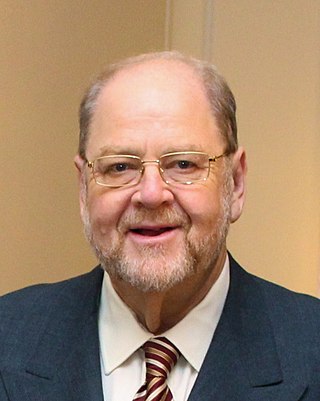
James Edward Rothman is an American biochemist. He is the Fergus F. Wallace Professor of Biomedical Sciences at Yale University, the Chairman of the Department of Cell Biology at Yale School of Medicine, and the Director of the Nanobiology Institute at the Yale West Campus. Rothman also concurrently serves as adjunct professor of physiology and cellular biophysics at Columbia University and a research professor at the UCL Queen Square Institute of Neurology, University College London.

The Max Planck Institute of Biochemistry is a research institute of the Max Planck Society located in Martinsried, a suburb of Munich. The institute was founded in 1973 by the merger of three formerly independent institutes: the Max Planck Institute of Biochemistry, the Max Planck Institute of Protein and Leather Research, and the Max Planck Institute of Cell Chemistry.

The Max Planck Institute for Biophysical Chemistry, also known as the Karl-Friedrich Bonhoeffer Institute, was a research institute of the Max Planck Society, located in Göttingen, Germany. On January 1, 2022, the institute merged with the Max Planck Institute for Experimental Medicine in Göttingen to form the Max Planck Institute for Multidisciplinary Sciences.
Ernest Charles "Ernie" Pollard was a British professor of physics and biophysics and an author, who worked on the development of radar systems in World War II, worked on the physics of living cells, and wrote textbooks and approximately 200 papers on nuclear physics and radiation biophysics.

Arthur L. Horwich is an American biologist and Sterling Professor of Genetics and Pediatrics at the Yale School of Medicine. Horwich has also been a Howard Hughes Medical Institute investigator since 1990. His research into protein folding uncovered the action of chaperonins, protein complexes that assist the folding of other proteins; Horwich first published this work in 1989.
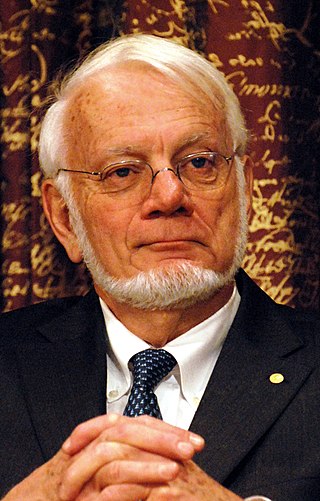
Thomas Arthur Steitz was an American biochemist, a Sterling Professor of Molecular Biophysics and Biochemistry at Yale University, and investigator at the Howard Hughes Medical Institute, best known for his pioneering work on the ribosome.
Wayne A. Hendrickson is an American biophysicist and university professor at Columbia. Dr. Hendrickson is a university professor at Columbia University in the department of biochemistry and molecular biophysics and Violin Family Professor of Physiology and Cellular Biophysics. He is also Chief Life Scientist in the Photon Sciences Directorate at Brookhaven National Laboratory and scientific director of the New York Structural Biology Center. Hendrickson has a B.A. from the University of Wisconsin at River Falls, a Ph.D. in biophysics at Johns Hopkins University with Warner Love, and postdoctoral research experience with Jerome Karle at the Naval Research Laboratory (NRL). He and his colleagues use biochemistry and x-ray crystallography to study molecular properties in atomic detail with current emphasis on membrane receptors and cellular signaling, on viral proteins and HIV infection, on molecular chaperones and protein folding, and on structural genomics of membrane proteins. Hendrickson's advances in diffraction methodology have contributed significantly to the emergence of structural biology as a major force in modern biology and molecular medicine.
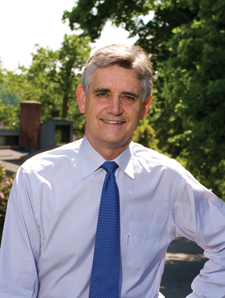
Bruce William Stillman, AO, FAA, FRS is a biochemist and cancer researcher who has served as the Director of Cold Spring Harbor Laboratory (CSHL) since 1994 and President since 2003. He also served as the Director of its NCI-designated Cancer Center for 25 years from 1992 to 2016. During his leadership, CSHL has been ranked as the No. 1 institution in molecular biology and genetics research by Thomson Reuters. Stillman's research focuses on how chromosomes are duplicated in human cells and in yeast Saccharomyces cerevisiae; the mechanisms that ensure accurate inheritance of genetic material from one generation to the next; and how missteps in this process lead to cancer. For his accomplishments, Stillman has received numerous awards, including the Alfred P. Sloan, Jr. Prize in 2004 and the 2010 Louisa Gross Horwitz Prize, both of which he shared with Thomas J. Kelly of Memorial Sloan-Kettering Cancer Center, as well as the 2019 Canada Gairdner International Award for biomedical research, which he shared with John Diffley.
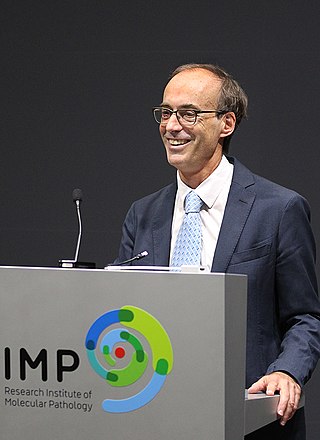
Ronald David Vale ForMemRS is an American biochemist and cell biologist. He is a professor at the Department of Cellular and Molecular Pharmacology, University of California, San Francisco. His research is focused on motor proteins, particularly kinesin and dynein. He was awarded the Canada Gairdner International Award for Biomedical Research in 2019, the Shaw Prize in Life Science and Medicine in 2017 together with Ian Gibbons, and the Albert Lasker Award for Basic Medical Research in 2012 alongside Michael Sheetz and James Spudich. He is a fellow of the American Academy of Arts and Sciences and a member of the National Academy of Sciences. He was the president of the American Society for Cell Biology in 2012. He has also been an investigator at the Howard Hughes Medical Institute since 1995. In 2019, Vale was named executive director of the Janelia Research Campus and a vice president of HHMI; his appointment began in early 2020.

Lynne Elizabeth Maquat is an American biochemist and molecular biologist whose research focuses on the cellular mechanisms of human disease. She is an elected member of the American Academy of Arts and Sciences, the National Academy of Sciences and the National Academy of Medicine. She currently holds the J. Lowell Orbison Endowed Chair and is a professor of biochemistry and biophysics, pediatrics and of oncology at the University of Rochester Medical Center. Professor Maquat is also Founding Director of the Center for RNA Biology and Founding Chair of Graduate Women in Science at the University of Rochester.
Tobias C. Walther is the chair of the cell biology program at Sloan Kettering Institute in New York City and a professor at Weill Cornell School of Medicine, where he co-directs the Farese and Walther lab. He has been a Howard Hughes Medical Institute investigator since 2015. His primary responsibilities are to provide leadership in research and teaching in the scientific fields of metabolism, membrane biology and lipids.
Garth L. Nicolson is an American biochemist who made a landmark scientific model for cell membrane, known as the Fluid Mosaic Model. He is the founder of The Institute for Molecular Medicine at California, and he serves as the president, chief scientific officer and emeritus professor of molecular pathology. He is also Conjoint Professor in the Faculty of Science and Technology, University of Newcastle, Australia. During the outbreak of the Gulf War syndrome, he was the leading authority on the study of the cause, treatment and prevention of the disease. He was appointed chairman of the Medical-Scientific Panel for the Persian Gulf War Veterans Conference. On suspicion of the bacterium that caused the disease as a product of biological warfare, he made extensive scientific investigations and served as authority to the United States House of Representatives. For his service he was conferred honorary Colonel of the US Army Special Forces and honorary US Navy SEAL.
Joseph R. Ecker is an American plant biologist and molecular biologist. He is Professor of Plant Molecular and Cellular Biology Laboratory and Director of the Genomic Analysis Laboratory at the Salk Institute for Biological Studies. He is also an Investigator of the Howard Hughes Medical Institute. He holds the Salk International Council Chair in Genetics.
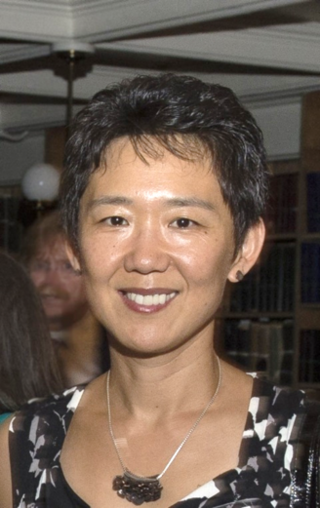
Rong Li is the Director of Mechanobiology Institute, a Singapore Research Center of Excellence, at the National University of Singapore. She is a Distinguished Professor at the National University of Singapore's Department of Biological Sciences and Bloomberg Distinguished Professor of Cell Biology and Chemical & Biomolecular Engineering at the Johns Hopkins School of Medicine and Whiting School of Engineering. She previously served as Director of Center for Cell Dynamics in the Johns Hopkins School of Medicine’s Institute for Basic Biomedical Sciences. She is a leader in understanding cellular asymmetry, division and evolution, and specifically, in how eukaryotic cells establish their distinct morphology and organization in order to carry out their specialized functions.

Mark Andrew Lemmon an English-born biochemist, is the Alfred Gilman Professor and Department Chair of Pharmacology at Yale University where he also directs the Cancer Biology Institute.
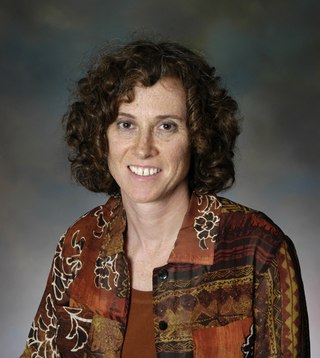
Clare M. Waterman is a cell biologist who has worked on understanding the role of the cytoskeleton in cell migration. Waterman is a Distinguished Investigator, Chief of the Laboratory of Cell and Tissue Morphodynamics, and Director of the Cell and Developmental Biology Center at the National Heart, Lung, and Blood Institute (NHLBI), in the National Institutes of Health (NIH) in Bethesda MD, USA. Waterman has received several awards and honors, including the Sackler International prize in Biophysics, the NIH Director’s Pioneer Award, and the Arthur S. Flemming Award for Public Service. In 2018, she was elected to the National Academy of Sciences. She currently serves on the editorial boards of eLife, Current Biology and Journal of Microscopy.
Anna Marie Pyle is an American academic who is a Sterling Professor of Molecular, Cellular & Developmental Biology and a Professor of Chemistry at Yale University. and an Investigator for Howard Hughes Medical Institute. Pyle is the president of the RNA Society, the vice-chair of the Science and Technology Steering Committee at Brookhaven National Laboratory, and previously she served as chair of the Macromolecular Structure and Function A Study Section at the National Institutes of Health.
Edwin W. Taylor is an adjunct professor of cell and developmental biology at Northwestern University. He was elected to the National Academy of Sciences in 2001. Taylor received a BA in physics and chemistry from the University of Toronto in 1952; an MSc in physical chemistry from McMaster University in 1955, and a PhD in biophysics from the University of Chicago in 1957. In 2001 Taylor was elected to the National Academy of Scineces in Cellular and Developmental Biology and Biochemistry.
Pollard, T.D. (2019) Cell motility and cytokinesis: from mysteries to molecular mechanisms in five decades. Ann. Rev. Cell Devel. Biol. 35:1-28. PMID: 31394047.











